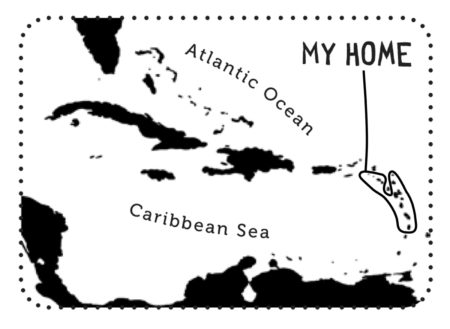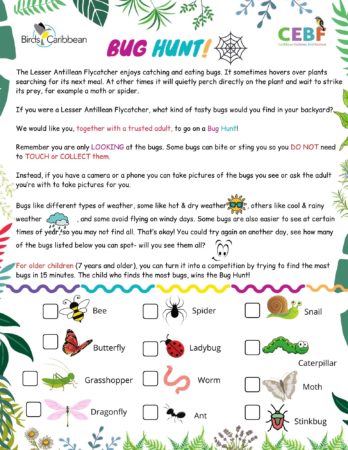Celebrate the Caribbean Endemic Bird Festival (CEBF) with us! Our theme in 2021 is “Sing, Fly, Soar—Like a Bird!” Have fun learning about a new endemic bird every day. We have colouring pages, puzzles, activities, and more. Download for free and enjoy nature with your family at home.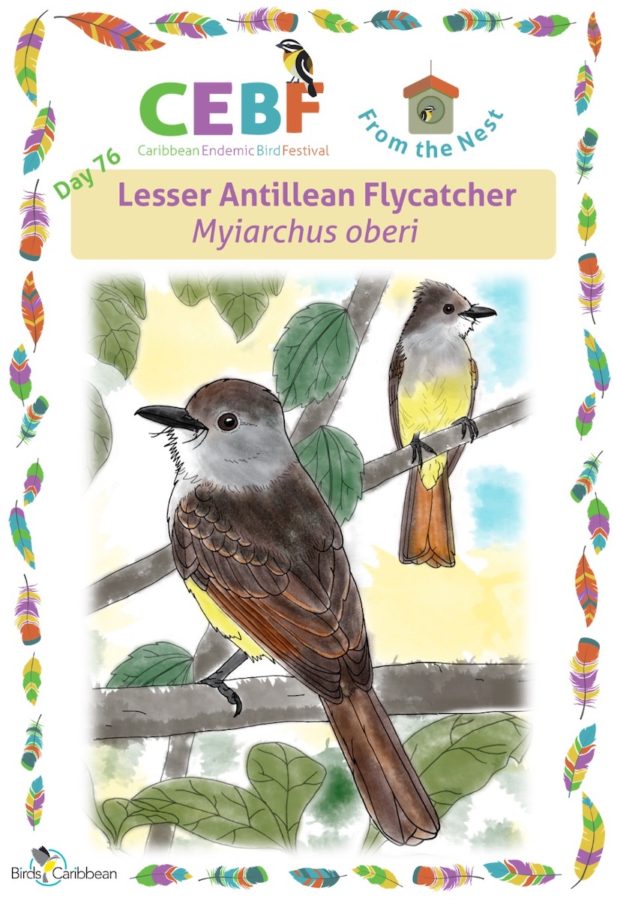
Endemic Bird of the Day: Lesser Antillean Flycatcher
This chill bird gives off that famous, laid-back Caribbean vibe — a true Caribbean endemic. As you wander through woodlands or dry scrubland, the Lesser Antillean Flycatcher (Myiarchus oberi) peers down, thoughtfully, curiously, watching you. This medium-sized flycatcher (8.5 inches) is inconspicuous, blending in nicely with the vegetation just below the canopy.
Feeling at ease with your presence, it might hazard its distinctive call: a loud, whistling, peeeeeee, or pheeuuu song, or shorter bursts of oo-ee, oo-ee or e-oo-ee. Or maybe it gives away its location going after that delectable flying insect — its favorite food.
Once you spot it, you might second guess yourself. Could it be a Flycatcher after all, or a similar-looking family member, an Elaenia maybe? You replay the call in your mind as you focus on the characteristics that set this species apart. It has a distinctive pale gray chest, a yellow belly, rufous edges to the wings, and rufous-toned tail. The bill is slightly heavy and black. If your eyes are good, or you’ve brought your binoculars, you’d even notice the tiny hook at the tip of its bill. Its dusty gray-brown upper body is capped with an elegantly round head. When excited, individuals may erect the feathers on the crown of their head.
The Lesser Antillean Flycatcher breeds from March to July. It builds its nest using strips of leaves and sticks, usually in a tree cavity. It lays 3–4 eggs that are cream-colored, with heavy purplish-brown and violet-grey markings.
Although its conservation status is Least Concern, the Lesser Antillean Flycatcher is found in only a handful of Caribbean islands. It is common in Antigua, Barbuda, St. Kitts, Nevis, Guadeloupe, Dominica, Martinique and Saint Lucia.
Like many other birds in the tropics, this flycatcher faces the threat of habitat loss due to tourism and housing development. They also have to ride out more intense and frequent storms brought on by climate change. Learn more about this species, including its range, photos, and calls here.
Colour in the Lesser Antillean Flycatcher
Download our West Indies Endemic Bird colouring page. Use the photos below as your guide, or you can look up pictures of the bird online or in a bird field guide if you have one. Share your coloured-in page with us by posting it online and tagging us @BirdsCaribbean #CEBFfromthenest
Listen to the song of the Lesser Antillean Flycatcher
The song of the Lesser Antillean Flycatcher is a plaintive, drawn out “pheee” or “phee-u-uu.”
Puzzle of the Day
Click on the image below to do the puzzle. You can make the puzzle as easy or as hard as you like – for example, 6, 8, or 12 pieces for young children, all the way up to 1,024 pieces for those that are up for a challenge!
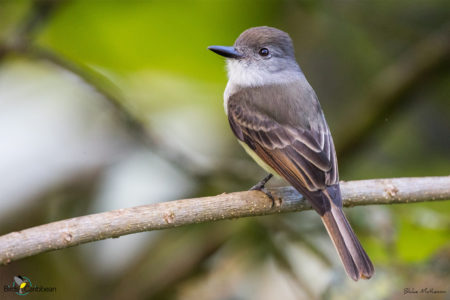
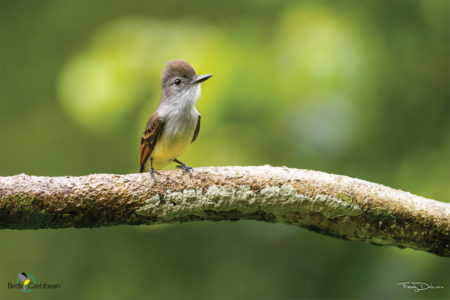
Activity of the Day
FOR KIDS: The Lesser Antillean Flycatcher catches and insects to eat. It sometimes this bird will flit between plants searching for its next meal. At other times it will perch perfectly still on a twig or branch and wait to strike its prey- perhaps catching a moth, fly or spider! Imagine you are a Lesser Antillean Flycatcher and find out what bugs there are in your backyard in our fun bug hunt! Follow out instructions and see how many different types of bugs you can find! Perhaps you will spot a butterfly of a bee flitting past? Remember just to look at the bugs and not to touch or collect them. You can check the ones you see off on our list and perhaps take some photos of them?
FOR KIDS AND ADULTS: Enjoy the videos below of Lesser Antillean Flycatchers in the wild! In the first you can see a Lesser Antillean Flycatcher perched in the branches of a tree, filmed on Barbuda. You can tell the bird is excited because his the feathers on the top of his head are raised. In the second video you can see another perched Lesser Antillean Flycatcher, you will hear its distinctive, loud “oo-ee” calls.

